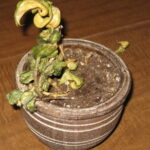Home gardening is one of the most enjoyable and satisfying activities of the warmer months. The dark cloud on every gardener’s sunny horizon are weeds. Anywhere that your ground is bare on top is susceptible to germinating weeds. This is especially true if the ground is watered and fertilized, like a garden. Weeds can choke out your plants by stealing important water and nutrients that they need to be healthy. Weeds also offer shelter an insects and disease that prey upon your precious plants. There are weeding methods and tools, however, that can make the job easier and faster.
The first thing a gardner should do before going outside is to don protective equipment. Gardening hats and sunblock will help prevent painful sunburns. Muck boots will keep gardeners from ruining good shoes as they stomping about a muddy garden. There are also protective clothing items, such as respirators, masks and overalls, to reduce contact with weed killers. Protective clothing can be purchased at gardening stores or on line on such sites as Gemplers.com or Coolibar.com.
Getting a preventative jump on weeding your garden will allow you to weed less often throughout the year. It will also provide your plants with a fighting chance of survival by allowing them to mature faster than the weeds in your garden. So plan on spending extra time weeding in the first six weeks of the spring and summer so you can enjoy your plants more often throughout the rest of the growing season.
The easiest way to weed your garden is to recognize the weeds when they are young. It is a lot easier on your hands and back to pull out a weed as it is sprouting, than it is to pull out a firmly established one. Brush up on local weeds in your area so you will be able to recognize them when they start to sprout. There are plenty of gardening books available at your local bookstore to help you do this. New and used gardening books can also be found at Amazon.com. If studying up on weeds seems like too daunting of a task, then just sow your seeds in marked rows. Anything out of the line is a weed and can be pulled. Another method is to transplant four to ten week old seedlings and plant in a grid. Anything that does not follow the pattern is a weed and can be pulled.
Another common, and probably the most effective way to prevent weeds, is to mulch. Mulch is any material spread or laid over the surface of soil as a covering, generally in a two to four inch layer. Mulching chokes out weed seeds, cools the soil, retains moisture and makes the garden bed more pleasing to look at. There are two types of mulch, organic and synthetic. Organic mulch improves soil fertility as it decomposes and will have to be replaced as it decomposes. Woodier and drier organic mulches are slower to decompose, but also replenish the soil with less nutrients. Examples of organic mulch are compost, straw, shredded bark or leaves and newspaper. Synthetic mulch will hold moisture and block weeds, but will not replenish any nutrients to the soil. Mulch that is synthetic also does not decompose quickly, therefore needs replaced less often. Some examples of synthetic mulch are black plastic, stone/gravel and landscape fabric. Both types of mulch can be found in the garden centers of any super or home improvement store, such as Home Depot.
Garden weeding can also be made easier by planting a cover crop. A cover crop will shade the soil and prevent the growth of many weed seedlings. In a vegetable garden, plant vegetables close together. Once the vegetable plants have established themselves as mature, their foliage should be touching that of the plant next to it. If you have achieved this, then your planting beds are well spaced.
Do not overcultivate your garden. Weed seeds will not germinate unless exposed to sunlight. Although some cultivation is nessacary to lessen the chance of compacting, it might be best to use organic mulch and let nightcrawlers do the compacting. Using too small of a rototiller in hard soil can result in over-cultivating since a lot of passes have to be made to get the tines deep enough into the ground. Use a large rototiller in firm soil since it has the power to till deep and break the soil into crumb size particles, instead of dust. A tiny rototiller is okay to use when all you need are a few passes. Preserving soil structure is good for drainage and for soil and roots. Rototillers can be purchased at your local Rural King or at online stores, such as amazing-atv-machinery.com.
Another method in your garden weeding repertoire is to control your weeds. You can do this by chopping the weed off at ground level, with a sharp hoe. Do not dig out any weed roots that are close to your plants, as you could damage your plant’s roots. Just remove the top of the weed. Persistent weeds may have to be chopped a couple times, but eventually they will die out.
Know your different types of gardening hoes. Although which hoe you use can be personal preference, some just work better in some weeding situations. A draw hoe has a flat blade that works best when pulled. A warren hoe has a pointed, heart-shaped blade. It creates furrows and works well for small weeds and weeding between rows. A Dutch hoe cuts weeds off at the surface using a push-pull motion. It is useful for covering larger areas. Further research, price comparison and purchasing of garden hoes can be done at Gardenhoes.net. You can also purchase garden hoes at garden supply stores, such as Lowes.
Let ground moisture clue you in on whether or not to hoe or hand pull garden weeds. It is best to hoe your garden when the ground is dry like concrete. Weeds will be exposed to the sun and shrivel up and die. If you hoe in wet soil, weeds will re-root. So it is best to hand pull weeds when the ground is moist. This will keep you from wasting your time and backbreaking labor.
Hand pulling weeds is easier in the early morning when the ground is wet from dew. The weeds will come out fairly easy as the soil has more give to it when wet and will be less likely to be resistant and break off weeds. Another good time to hand pull weeds in your garden is after a recent rain.To hand pull weeds in your garden, grasp the weed at ground level and pull straight up. Do not pull at an angle as this risks breaking away the stem from the roots, meaning the weed will grow back. Also make sure you pull on every stem growing from the weed’s roots to also prevent breakage.
Herbicides can also be a useful tool for weeding a flower garden, but are not recommended for vegetable gardens. Most weed killers are not selective enough to differentiate between a weed and you plant. I once had a landlord who turned all of the landscape bushes around her house a crispy brown shade by spraying herbicide in the rock borders around her house. The safest way to avoid getting herbicide on your plants is to apply it to the weeds you want to kill with a brush.
There are different classes of herbicides on the market, such as chemical and less toxic, acetic based herbicides. Chemical herbicides, such as QuickPro Dry with Roundup and Brushkiller, are systemic. This means that the herbicide kills the whole plant by passing down through the vascular system and into the root. Acetic based herbicides, such as Nature’s Avenger, Work by burning the weed’s leaves. It may take more applications to fully kill weeds since the roots may survive awhile. Other herbicide options can be purchased at ePestsolutions and Arbico-Organics.com.
Be careful to dispose of your garden’s weeds in a sealed garbage bag. If you leave them on the ground or in a compost heap, they could regrow in the soil. Their seeds could also spread back to your garden. This is the same reason you should keep mower discharge from pointing at your flower bed. You could accidentally sow a new crop of weed seeds.
Now that you have a comprehensive guide on how to weed your garden with less difficulty, go out and enjoy your beautiful plants!



